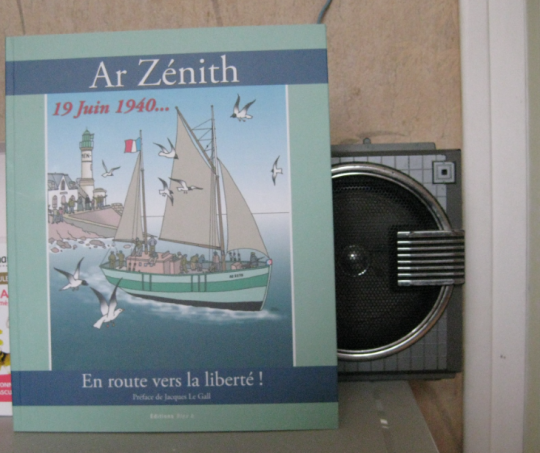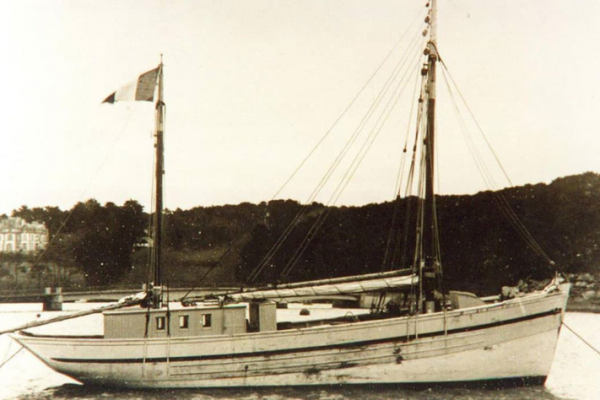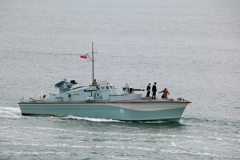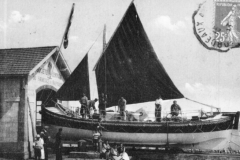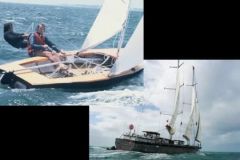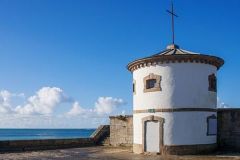The Ar Zénith was the first French civilian ship to leave a French port for England on June 19, 1940, the day after General de Gaulle's appeal. On board were young Sénans and Audiernais, driven by a common desire: the fight against the occupying forces and Nazism. At the Cale des Torpilleurs in Saint Malo, the AFL Ar Zénith association is working to restore it.
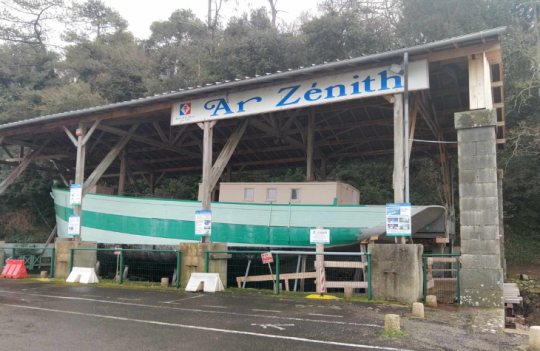
Building a dundee
In 1939, at the Kéraudren yard in Camaret, a dundee was being built for three Senans: Jean-Marie Menou, Ambroise Spinec, and Martin Fouquet. Characterized by a two-masted ketch rig, with a main auric sail forward and a mizzen sail aft rigged in Bermudian, the Ar Zénith is 21 meters long and has an auxiliary engine. Its role: to transport passengers, goods and mail twice a week between Audierne and the Île de Sein.
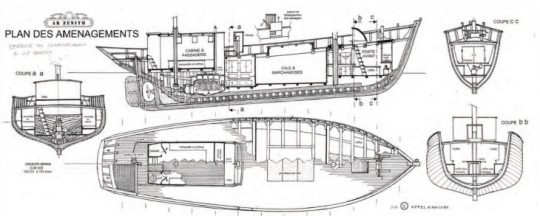

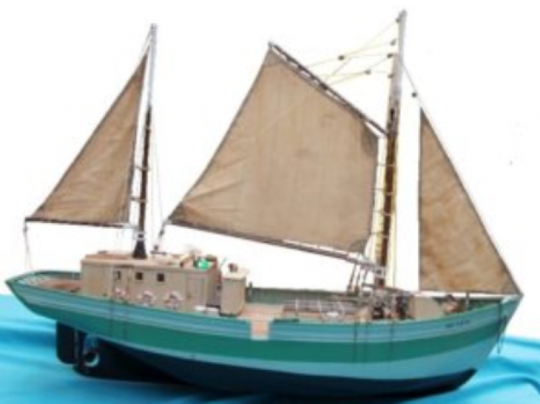
General De Gaulle's appeal
On the morning of June 19, 1940, the day after General de Gaulle's call to arms, the Ar Zénith docked at Audierne, from where it was due to set sail around midday as usual for the Ile de Sein. A group of nine young people from Audierne came aboard. They had heard General de Gaulle's appeal the day before, and were anxious to reach England, with the Ile de Sein as a first port of call. This group was soon joined by a dozen others. The skipper, Jean-Marie Menou, accepted these young people on board.
Just as he was about to leave the port for Sein, Lieutenant Dupont, some 15 Alpine hunters and a truck loaded with weapons and ammunition boarded the Ar Zénith. At Sein, the civilians were forced to disembark, but the island of Sein was a first step towards Great Britain.
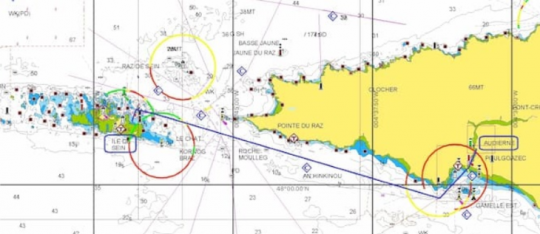
The crew and soldiers head for Ushant to take on more soldiers. The boat arrived in English territorial waters on June 20.
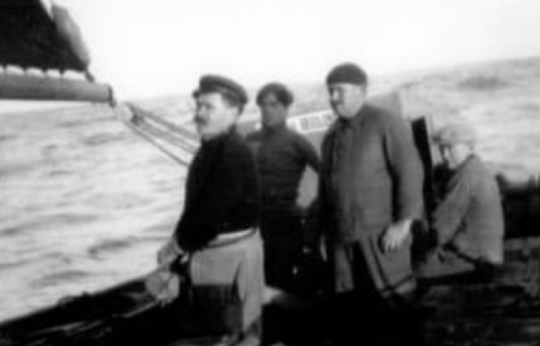
The initial 21 young volunteers from Ar Zénith finally managed to set sail aboard the Monique Andrée, wedged into the cabin roof, to rejoin the ranks of the Free French Forces. One of them recounts: we're in second place, we're moving forward and we're passing. Oh, surprise! We're very close to Ar Zénith, who's waiting and whom we greet loudly from our perch. Lieutenant Dupont, as tall and phlegmatic as ever, gives us a discreet Bravo! He would later remind us of the moment when these young Audiernais had bluffed him a little! Then we entered the large and beautiful Plymouth Harbour, crowded with ships
The Ar Zénith was soon requisitioned by the Royal Navy and used to transport munitions along the south coast of England.
Post-war functions
After the war, in 1946, the Ar Zénith returned to France. The boat had not been maintained and had to be repaired by its original builder. With the same crew as in 1940, the Ar Zénith resumed its role as courier to the Ile de Sein for six months. It was then chartered by a company that transformed it into an hourglass, during which time it took part in the reconstruction of Brest, before being passed from hand to hand for use in various types of transport around Brittany.
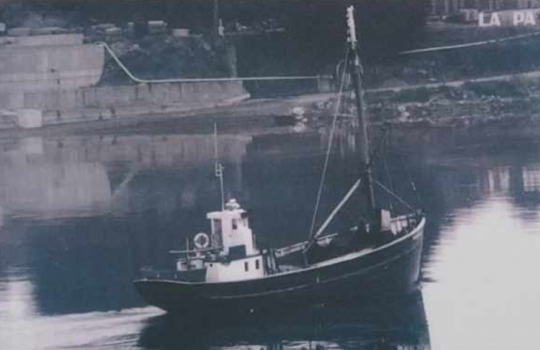
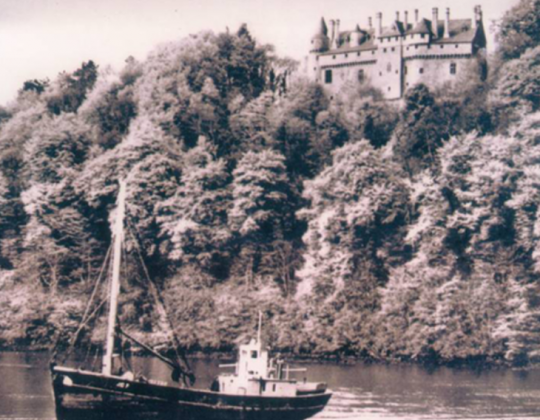
In 1978, a former member of the Free French Forces, Pierre Pinel, recognized the Ar Zénith and purchased it with the money from a national lottery win. While living aboard, he patiently devoted himself to restoring the boat, which had been extensively modified, to its original appearance.
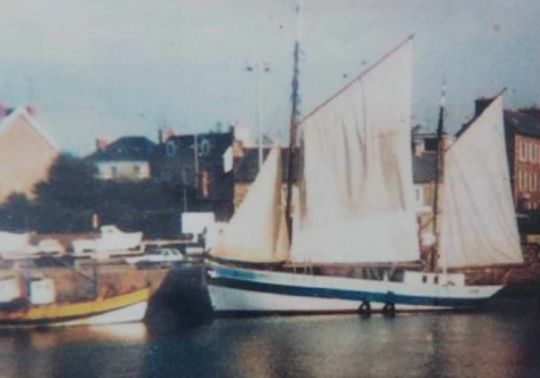
On June 19, 1990, he sailed to Sein to mark the fiftieth anniversary of the Ar Zénith's departure for England. Unfortunately, on the way back, it ran aground, breaking its keel on a rocky plateau.
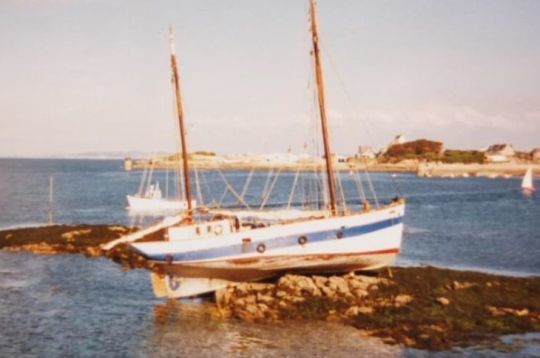
Deteriorating for 5 years, it seems definitively doomed to abandonment in the mud at the bottom of the River Penzé.
The duty to remember
In December 1995, a number of Malouins discovered the existence of the dilapidated Ar Zénith.
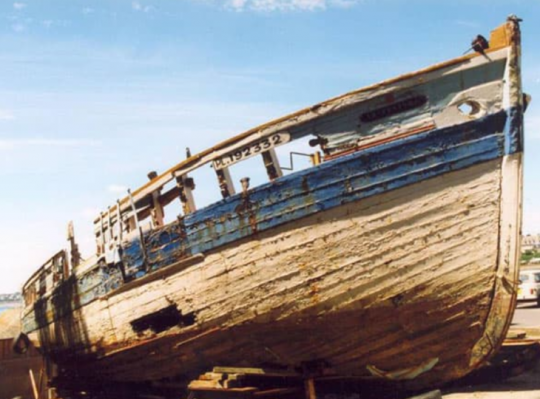
In 1996, the A.P.P.E.L. Ar Zénith association was created to save this symbol of Resistance and Freedom. The wreck was towed from Penzé to Saint-Malo, and a cofferdam built to protect the ship from storms and high tides.
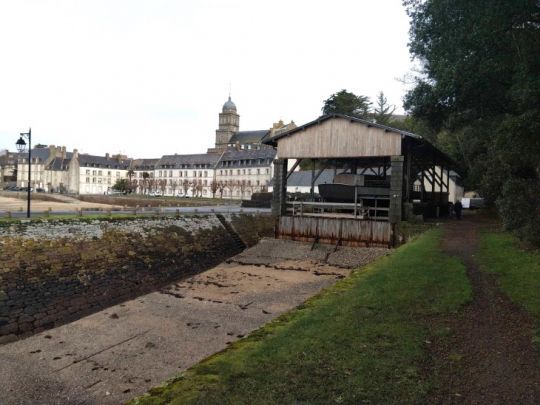
Various restoration operations have already been undertaken.
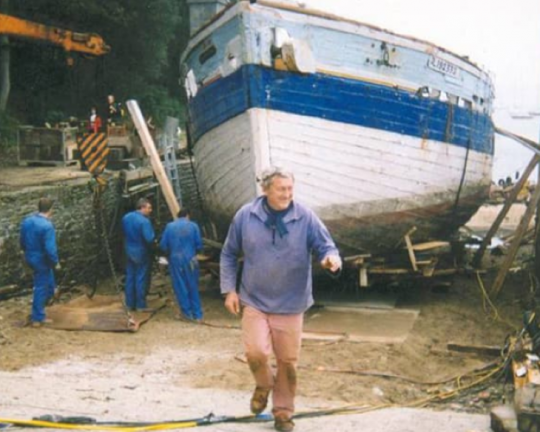

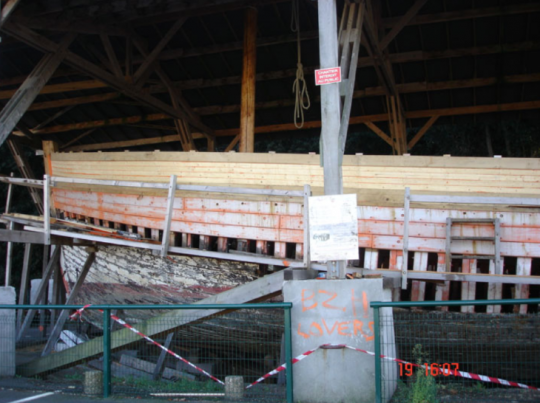
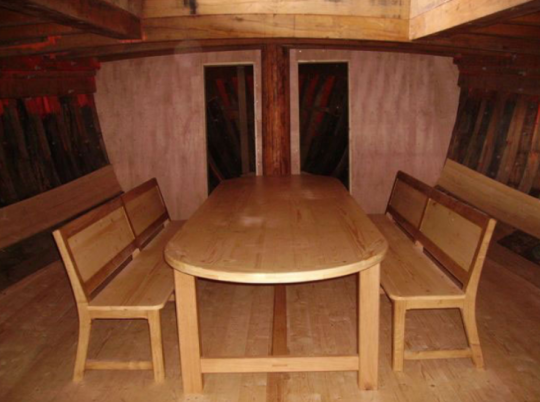
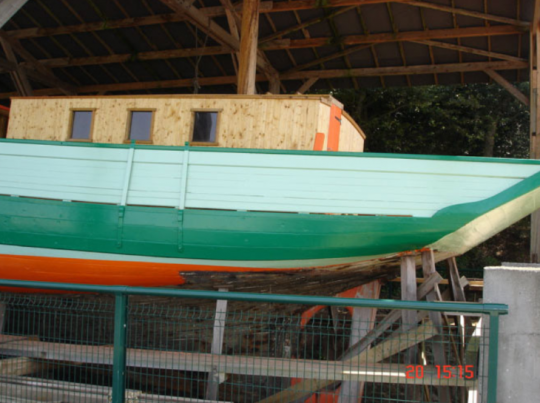
In 2016, the association merged with AVAFL (Association des Vétérans et Amis de la France Libre) and its name was changed to AFL Ar Zénith (Amicale France Libre Ar Zenith). For its members, the Ar Zenith is much more than just a boat it's also the symbol of the commitment of a region, Brittany, which provided France Libre with its largest contingent of volunteers. And it's also the illustration of a youth who, at the time, placed patriotism among the supreme values. Without them, and without the boats that enabled them to reach England, it is highly likely that the fate of France would have been different'' .
Today, the Ar Zénith is housed in a hangar near the Tour Solidor in Saint Malo, and more than 300 members are gathered around President Claude Alain LIOT, the members of the foundation committee and the board of directors to bring this listed boat back to life.
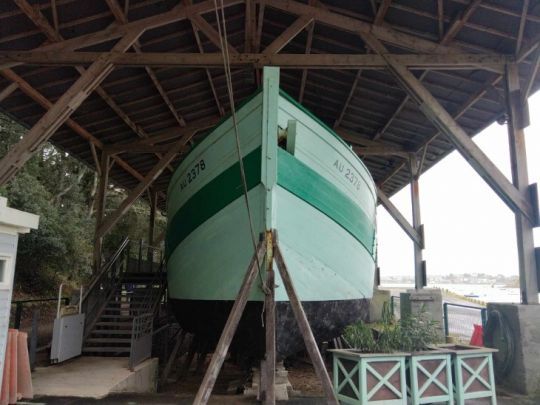
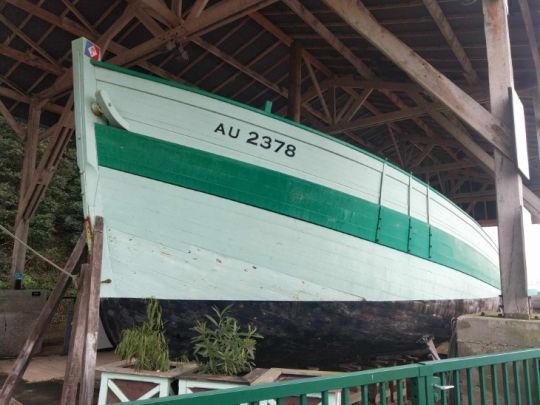
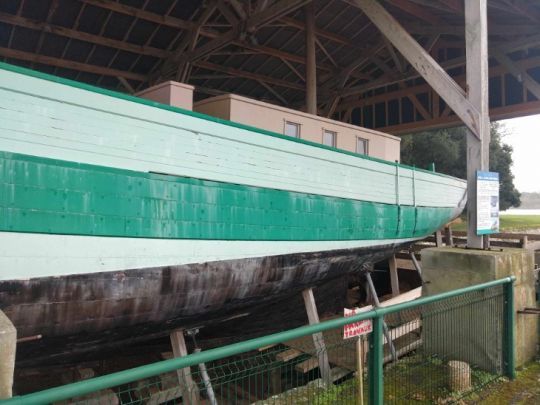
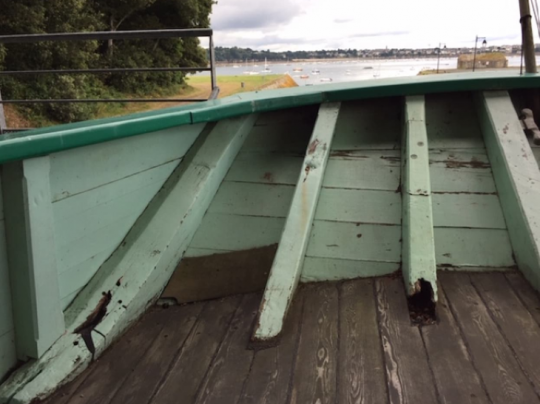
Current challenges and the call for donations
The Ar Zénith is stored dry under a roof at the Cale des Torpilleurs in Saint Malo.
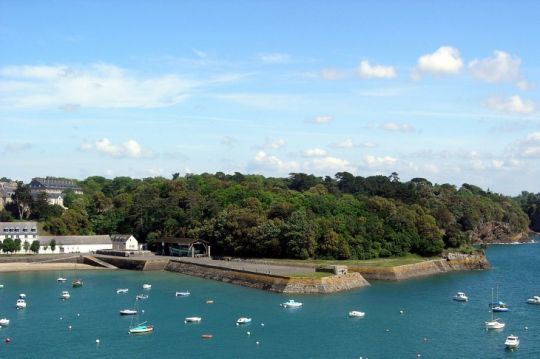
Although this roof covers the boat, during depressions, the stern of the boat is exposed to the elements due to the direction of the prevailing winds. Over the years, the stern of the Ar Zénith has deteriorated, to the point where major repairs are necessary and even indispensable to the boat's survival.
The association has decided to extend the shelter-roof over the rear of the Ar Zénith to protect it more effectively, and to restore the damaged stern.
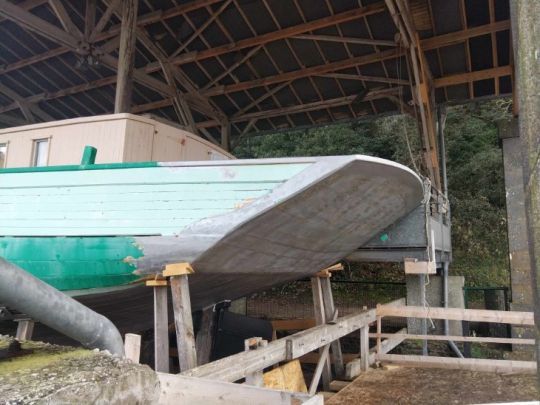
Everyone can help bring the Ar Zénith back to life by joining the project. The Ar Zénith is open to visitors all summer long, or by group appointment all year round.
A book entitled "Ar Zénith. En route vers la liberté!" written by Pierre-Louis Auffret and published by Bleu B is also available. The book's preface was written by Jacques Le Gall, a Free French Resistance fighter who boarded the Ar Zénith with his brother, Alexis Le Gall, on June 9, 1940.
